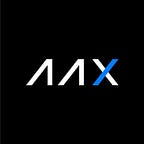Facebook’s Libra: A Gateway to the Wider Digital Assets Market
After months of speculation about what Facebook is doing with blockchain, it’s now been officially announced: Facebook will be releasing its own coin, Libra.
Opinions may vary, but one thing is certain: Libra presents a massive opportunity for the wider digital assets market. It’s likely to become the first blockchain-based currency to be used by the mainstream on an everyday basis. It can furthermore act as a gateway for financially excluded communities to access global markets. Especially given the penetration of mobile technology in these communities.
Let’s have a closer look at what Libra really is and how it links into the wider digital assets economy.
What is Libra?
Libra is a digital coin, maintained on a blockchain governed by heavyweight companies including PayPal, Uber, Visa, and MasterCard. The coin is set to launch in 2020.
Unlike Bitcoin and some of the other early cryptocurrencies, Libra is a stablecoin. This means its price is tied to that of a stable asset. In the case of Libra, it will initially be backed by a basket of assets containing USD, EUR, JPY, and GBP.
Practically, anyone can purchase Libra, use it to pay friends and potentially settle bills, pay for a coffee, or at any venue that accepts the coin. As it is a stablecoin, and frankly because Facebook has a 2.3 billion-strong user base, holders of Libra shouldn’t have to worry too much about the coin lacking in utility.
As to its goal, Dante Disparte, head of policy and communications at the Libra Association, said: “Libra’s mission is to enable a simple global currency and financial infrastructure that empowers billions of people.”
What could this mean for the wider digital currency market?
Naturally, not everyone is excited about Libra. Skeptics are keen to point out that Facebook’s track record with regard to data privacy doesn’t bode well for Libra.
On the other hand, Tom Lee, head of research at Fundstrat, expects that Libra will become the dominant stablecoin and that the project gives digital assets, such as Bitcoin, more legitimacy.
There must be truth to both perspectives, but perhaps we need to take a longer view and think about Libra in the context of the evolution of money throughout time.
After literally millennia of transitioning through various payment systems and value proxies, money and how it is represented is entering a new phase — where the digital asset becomes the latest store of value.
And with the announcement of the Libra project, digital assets may have just reached the filling point from niche currency to mainstream tender.
Indeed with mobile technology as a potential accelerant, added to the fact that 96% of Facebook users access the platform via mobile, Libra could be just what is needed for people to enter the global digital assets economy. Not just for the unbanked, but anyone who hasn’t yet used blockchain.
If Libra does gain traction, it’s not hard to imagine a scenario where digital asset exchanges such as AAX, Binance, Coinbase, and others, enable people to use Libra to trade into other cryptocurrencies.
This could mean that even the unbanked will now be able to use digital assets to store and grow wealth.
Similarly, as more and more venues come to accept Libra as a valid form of payment, it wouldn’t be too far fetched to see them open up to other cryptocurrencies as well — especially stablecoins. In fact, we may see more multinationals follow in Facebook’s footsteps and add their own stablecoins to the market.
Whether this is good or bad, is not a question for us to answer. In the end, the market will decide.
But what this means for digital assets should only be positive.
Originally published at https://blog.aax.com on June 25, 2019.
